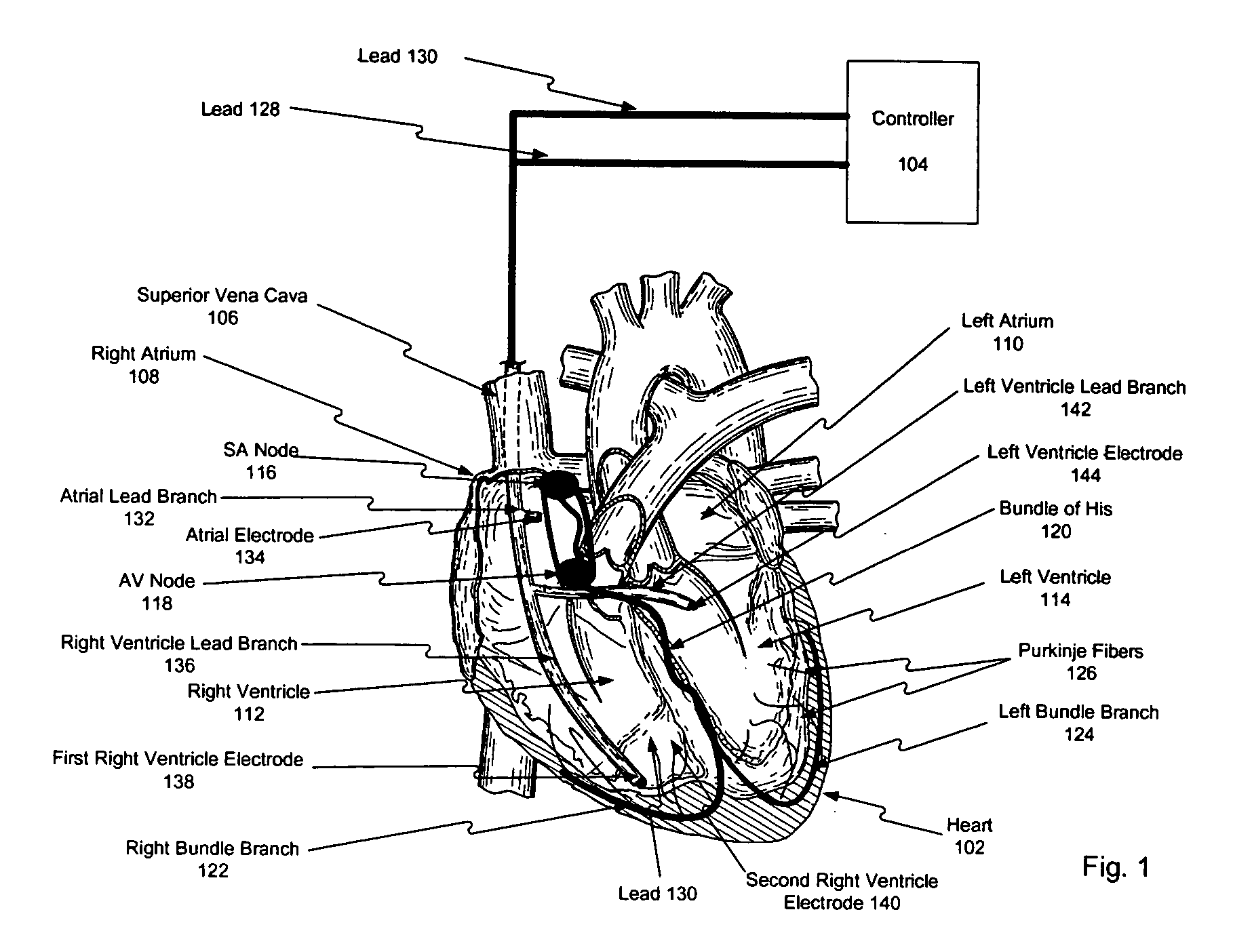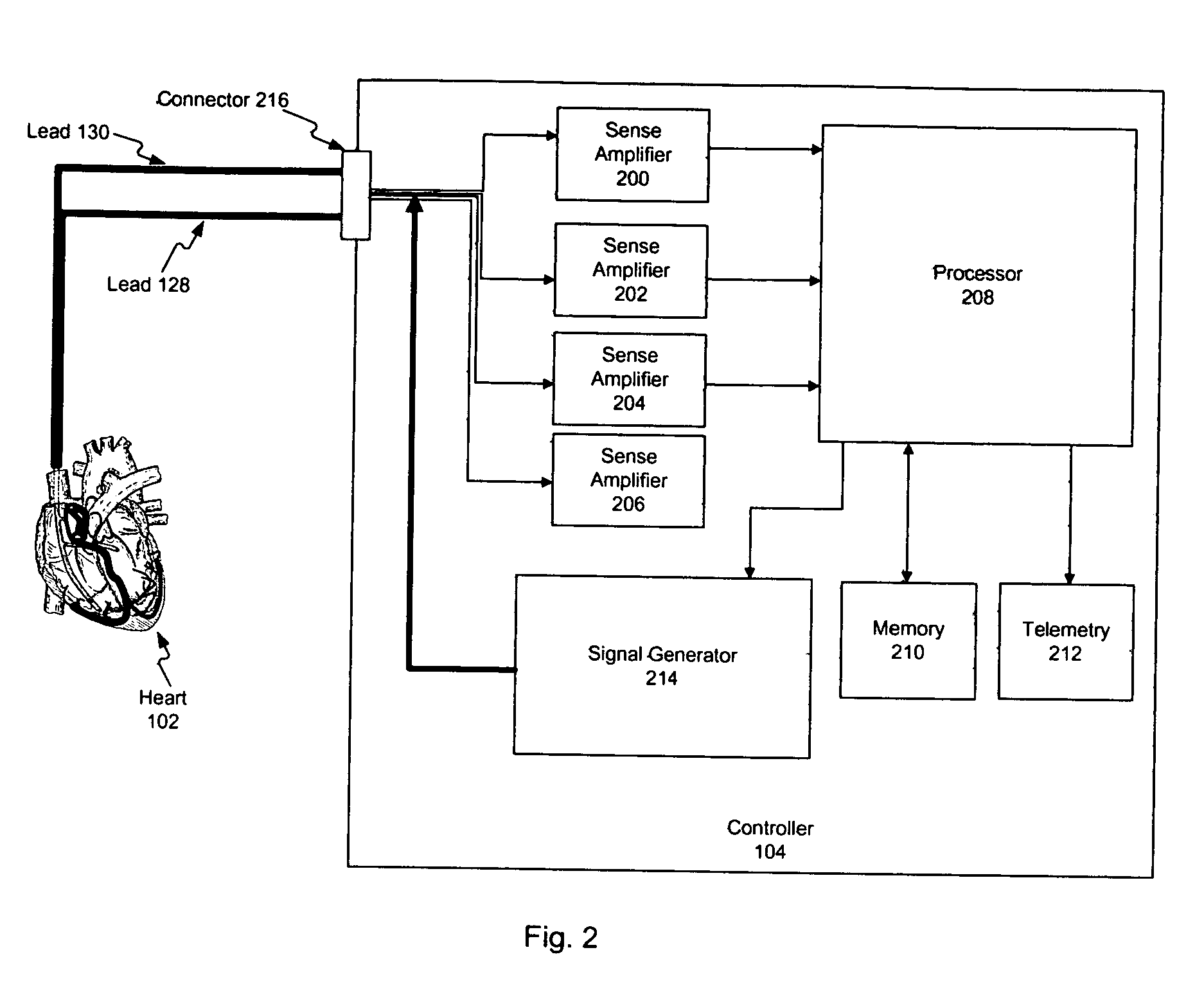Method and apparatus for intrachamber resynchronization
- Summary
- Abstract
- Description
- Claims
- Application Information
AI Technical Summary
Benefits of technology
Problems solved by technology
Method used
Image
Examples
Embodiment Construction
[0001] 1. Field of the Invention
[0002] The present invention relates to medical devices, and in particular, to methods and apparatus for controlling contraction of a heart.
[0003] 2. Background
[0004] During a normal heartbeat, the heart contracts in a coordinated fashion to pump blood. In particular, the heart contracts based on rhythmic electrical impulses, which are spread over the heart using specialized fibers. These rhythmic electrical pulses are initiated by the heart's natural pacemaker called the sino-atrial node (“SA node”). The SA node initiates electrical impulses to cause the right and left atria to contract. As the atria contract, the electrical impulses from the SA node propagate to the atrial-ventricular node (“AV node”). The time these impulses take to propagate from the SA node through the AV node is known as the A-V delay. The A-V delay allows the atria to fully contract and fill the ventricles with blood.
[0005] The AV node then transmits the impulse, which caus...
PUM
 Login to View More
Login to View More Abstract
Description
Claims
Application Information
 Login to View More
Login to View More - R&D
- Intellectual Property
- Life Sciences
- Materials
- Tech Scout
- Unparalleled Data Quality
- Higher Quality Content
- 60% Fewer Hallucinations
Browse by: Latest US Patents, China's latest patents, Technical Efficacy Thesaurus, Application Domain, Technology Topic, Popular Technical Reports.
© 2025 PatSnap. All rights reserved.Legal|Privacy policy|Modern Slavery Act Transparency Statement|Sitemap|About US| Contact US: help@patsnap.com



